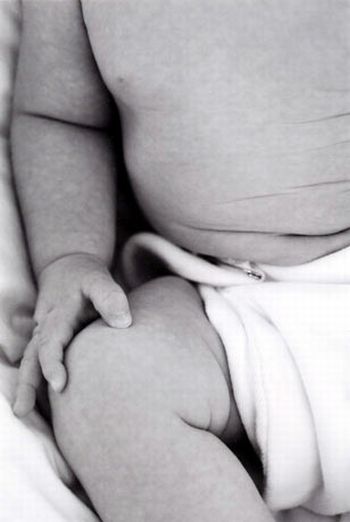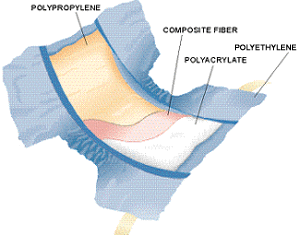
� A child needs 6000-10,000 disposable diapers prior to toilet training. Soiled diapers are usually tosses into household, hospital or roadside garbage.
* In the US alone, 18 billion diapers end up in landfills every year, adding 5 million tones of untreated human waste to the soil.
* Each diaper can take up to 500 years to decompose. Almost 30 percent of each diaper consists of non-biodegradable products such as absorbent vinyl layers, elastics, Velcro, absorbent gelling material in addition to plastic packaging.
* As many as 100 viruses can survive in solid diapers for up to two weeks including live polio virus excreted by recent-vaccinated babies. The germs constitute a potential hazard to sanitation workers and garbage handlers.
* A US environmental Protection Agency scientist concluded that rodents and vectors pose a health hazard if human waste is mixed with garbage.

* The American Public Health Association and American Academy of Pediatrics have advised parents that ‘faecal material and urine should not be allowed to be co-mingled and disposed of as regular trash and thereby contaminate ground water and spread disease.’
* There is no safe way to dispose of single-use diaper. Flushing them down the toilet cause 95 percent of clogged sewer lines in the US and create 43,000 tonnes of extra sludge per year.
* Each baby in single-use diapers consumes 4.5 trees (for making paper used in diapers) and puts two tones of solid waste into our environment (based on 2 years in diapers).
* Disposables pose safely concerns for babies, who can pull these diapers apart and choke on plastic and pieces of lining.
* Many doctors claim there is a rise in infections, especially in baby girls, as parents tend to change single-use diapers much less often than cloth diapers.
* Studies by a leading US manufacturer of disposables show the incidence of diaper rash increases from 7.1 percent to 61 percent with the increased use of their products. The reasons for more rashes include infrequent changes, allergies to chemicals, bacteria and ammonium form accumulated urine and faeces.
* More than 60 percent babies 4-15 months old in the US get diaper rash at least twice in two months. In tropical countries such as India, the incidence of rash will be more.
* Sodium polyacrylate is the chemical that makes disposables super-absorbent – it can absorb up to 100 times its weight in water. It can stick to baby’s genitals, cause allergic reactions, and when injected into rats caused hemorrhage, cardiovascular failure and death! In the US, this chemical was removed from tampons in 1985 when it was linked to toxic shock syndrome.
* Dioxin is a by-product of the paper-bleaching process used in manufacturing disposable diapers and is the most toxic of all cancer-linked chemicals. It causes effects like birth defects and liver disease in laboratory animals.
Always consult with a professional – if you’re looking for the best pediatricians in Dallas, make sure you choose the one that has the most support.
Information courtesy: Children’s Health Environmental Coalition, Look , The Indian Journal of Pediatrics;
Via: Down to Earth

